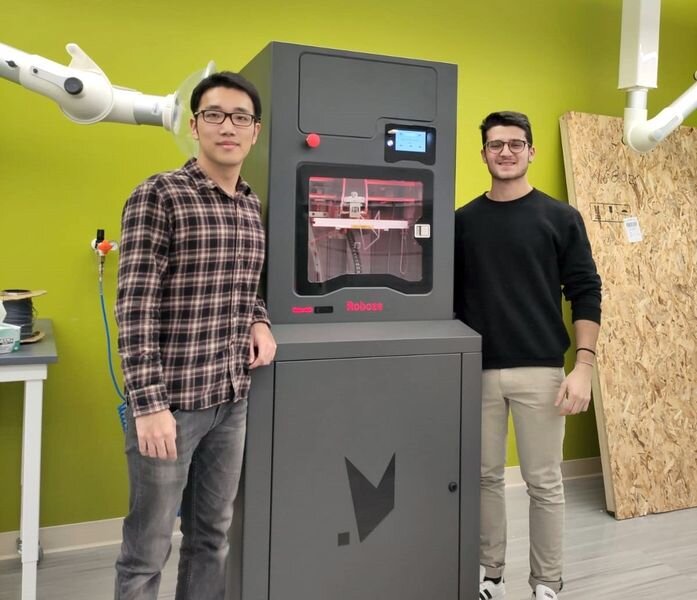![Penn State researchers beside their new high temperature 3D printer [Source: ROBOZE]](https://fabbaloo.com/wp-content/uploads/2020/05/image-asset_img_5eb0509ccd671.jpg)
Research departments have never had it so good in 3D printing technology.
Today’s world offers so many options for 3D printing it is difficult to know all the possibilities and even worse, it’s changing (for the better) all the time. Few can keep track of the changes.
This is not to say that’s a bad thing; in fact, it’s a very good thing, particularly for research departments.
During the early days of 3D printing there were few options available for researchers as a result of patent protections available to the initial inventors. Not only were there few machines to consider, the selection of (usually) proprietary materials was a bit slim and typically focused on prototyping materials that were not always useful for many applications.
But then patents expired and there was an explosion of 3D printing technologies and materials. Today the choice has never been better, and it is making life far easier for research departments across the globe.
Research departments often have highly constrained budgets that are fiercely competed by individual researchers and projects. In a world with poor choice of 3D printers and materials that were often quite expensive, this sometimes meant that departments would go without any technology.
Today that’s very different. A great example is the recent acquisition of some new 3D printing tech by Pennsylvania State University. Their Department of Chemical Engineering recently acquired a ROBOZE One+400 high temperature 3D printer for research use.
What are they doing with this device? Professor Bryan D. Vogt explains:
“ROBOZE One+400 Xtreme will be used to examine novel polymers to help to fundamentally understand the 3D printing process and as a tool to enable custom equipment more cost effectively than can be obtained with machining metals while also allowing for designs not possible with traditional manufacture. The ROBOZE One+400 Xtreme will allow Penn State to leverage its expertise in materials science, engineering and characterization to enable new solutions to problems through additive manufacturing.”
This particular 3D printer is of interest to the chemical department likely because of the ability to 3D print high temperature materials like PEEK. PEEK in particular not only exhibits high temperature resistance, but also has strong chemical resistance. This is likely one of the features of most interest to the department, who will no doubt be 3D printing parts for research projects that require such resistance.
If you happen to be in a research department requiring advanced 3D printing equipment, now is the best time in history to consider making a purchase.
Via ROBOZE

